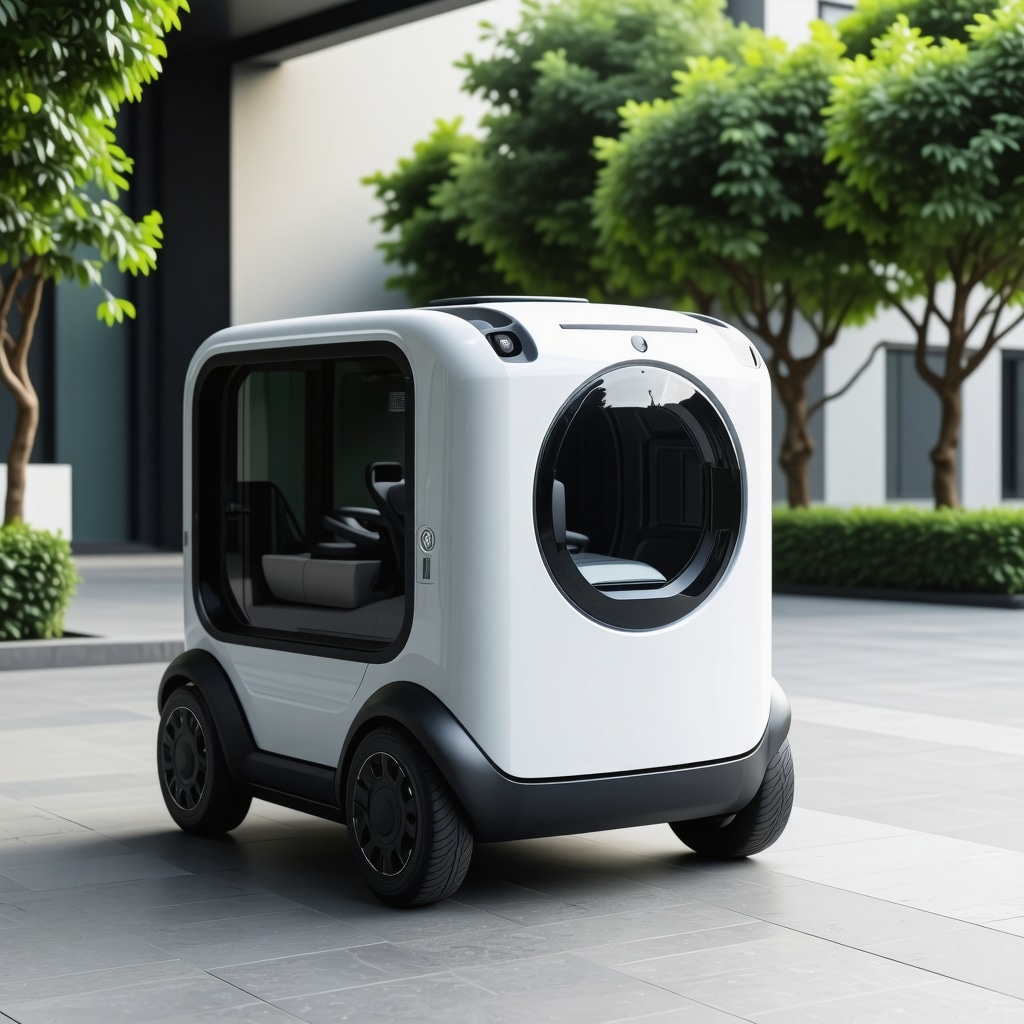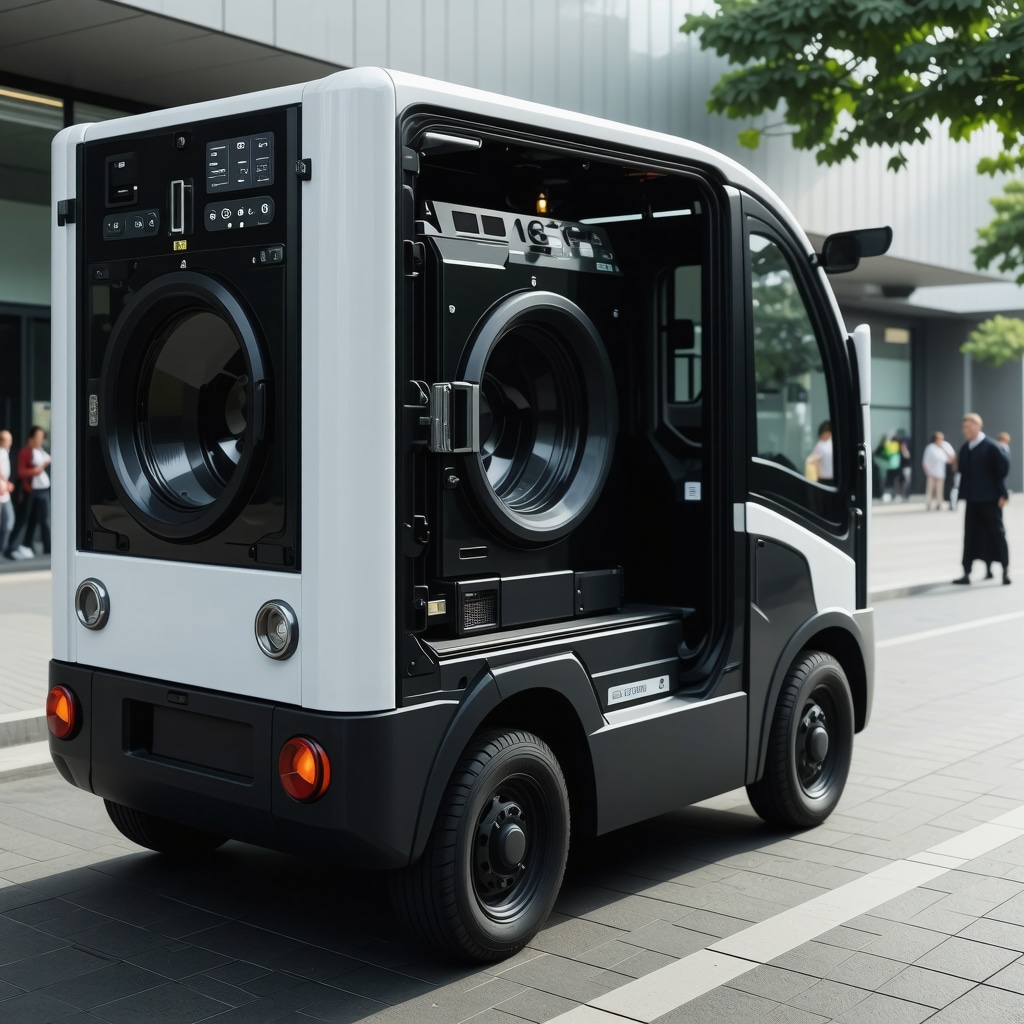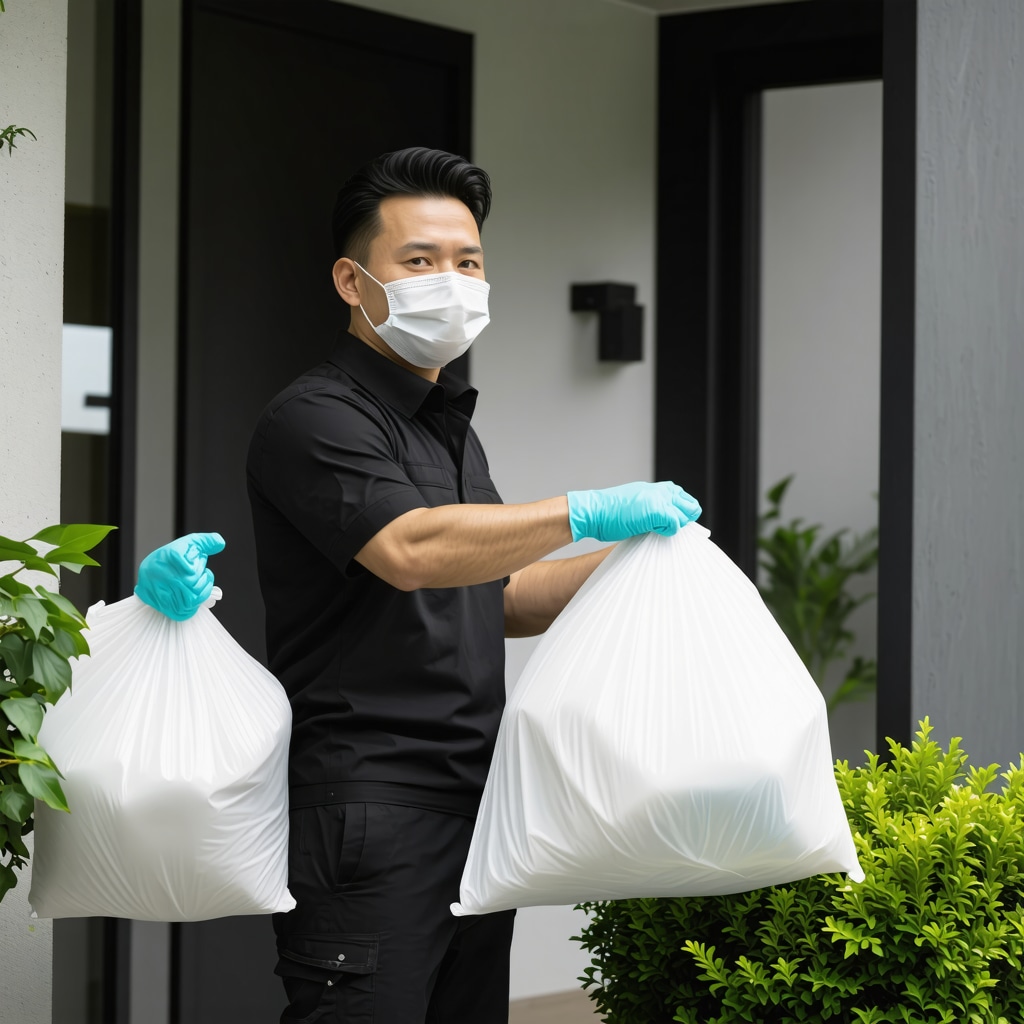Expert Perspectives on Safe Laundry Pickup in 2024: Beyond Basic Hygiene
In the evolving landscape of laundry services, ensuring impeccable sanitation during pickup is paramount. As health standards heighten post-pandemic, laundry providers must deploy rigorous hygiene protocols to safeguard consumer health and maintain trust. This analysis explores advanced sanitation methods, emphasizing why safe laundry pickup transcends mere cleanliness to encompass comprehensive biohazard control, cross-contamination prevention, and transparent operational procedures.
Integrating Advanced Sanitation Technologies for Laundry Pickup Safety
Modern laundry services increasingly utilize state-of-the-art antimicrobial treatments and UV-C disinfection to mitigate pathogenic risks during collection and transport. These technologies align with guidelines from the Centers for Disease Control and Prevention (CDC), which underscore the importance of surface sanitization and hand hygiene to interrupt transmission chains (CDC Environmental Infection Control Guidelines). Coupled with sealed, single-use laundry bags and vehicle sanitation protocols, these measures form a multilayered defense system that elevates consumer safety to professional-grade standards.
How Does Contactless Laundry Pickup Enhance Sanitation and User Confidence?
Contactless laundry pickup is not merely a convenience feature but a critical sanitary innovation. By eliminating direct interaction, it significantly reduces the chance of viral or bacterial transfer between customers and service personnel. Moreover, digital scheduling platforms and real-time tracking systems facilitate minimal physical exchange, reinforcing confidence in service safety. This approach aligns with evolving consumer expectations for hygienic, efficient, and technology-integrated laundry solutions, as detailed in Contactless Laundry Pickup Safety Tips and Benefits.
Professional Protocols: Staff Training and Compliance in Sanitation Practices
Beyond technological aids, human factors remain critical. Rigorous training in infection control, use of personal protective equipment (PPE), and adherence to standardized sanitation procedures are essential for all employees involved in laundry pickup. Regular audits and transparent compliance reporting ensure that protocols are consistently maintained, mitigating risks of contamination. These practices are indicative of industry leaders committed to delivering safe and reliable laundry services.
Contextual CTA: Elevate Your Laundry Hygiene Standards with Expert Insights
For those seeking to deepen their understanding of advanced laundry hygiene and operational excellence, explore our comprehensive guide on Pickup Laundry Safety and Sanitation Best Hygiene Practices. Share your professional experiences or questions to contribute to the ongoing discourse on optimizing laundry sanitation in contemporary service environments.
Leveraging Data Analytics to Optimize Laundry Pickup Sanitation
In the quest to refine laundry pickup safety, data analytics has emerged as a transformative tool. By systematically collecting and analyzing operational metrics—from pickup timing and route efficiency to sanitization compliance—service providers can uncover patterns that directly impact hygiene outcomes. Advanced algorithms can predict peak contamination risks, enabling proactive deployment of sanitation resources and personnel training. This data-driven approach not only enhances safety but also optimizes service efficiency, aligning with best practices for continuous quality improvement as endorsed by industry authorities like the International Fabricare Institute (IFI Official Site).
Environmental Considerations in Safe Laundry Pickup: Balancing Hygiene with Sustainability
Modern consumers increasingly demand that laundry services harmonize rigorous sanitation with eco-friendly practices. Providers face the challenge of deploying disinfectants and single-use materials without compromising environmental stewardship. Innovations include biodegradable single-use laundry bags and the use of EPA-registered green disinfectants that effectively neutralize pathogens while minimizing ecological footprints. This dual focus ensures that heightened hygiene standards do not come at the expense of sustainability goals, a balance critical for long-term service viability.
What Future Technologies Could Revolutionize Laundry Pickup Sanitation Beyond Current Standards?
Emerging innovations such as antimicrobial nanocoatings on laundry bags and vehicle interiors, AI-powered sanitation monitoring, and autonomous contactless pickup vehicles promise to redefine hygiene protocols in laundry services. These technologies could drastically reduce human contact points and introduce real-time contamination alerts. However, their integration requires rigorous validation to ensure safety efficacy and consumer acceptance. Staying abreast of these advancements is crucial for providers aiming to lead in sanitation excellence.
For a deeper dive into practical tips enhancing your laundry service hygiene, consider exploring our detailed guide on Pickup Laundry Safety and Sanitation Best Hygiene Practices. We invite professionals and consumers alike to share their insights and experiences to foster a community dedicated to exceptional laundry sanitation standards.

Harnessing AI and IoT for Real-Time Monitoring in Laundry Sanitation
The integration of Artificial Intelligence (AI) and the Internet of Things (IoT) into laundry pickup services represents a frontier of sanitation management. By deploying sensor-equipped laundry containers and vehicles, service providers gain unprecedented visibility into contamination risks. IoT devices can continuously monitor parameters such as temperature, humidity, and surface cleanliness, transmitting data to centralized AI platforms. These systems then analyze the data to detect anomalies indicative of potential biohazard presence or protocol breaches, triggering immediate corrective actions.
This dynamic oversight not only ensures compliance with sanitation standards but also fosters predictive maintenance of equipment and optimized scheduling of disinfection cycles. According to a recent study published in the Journal of Cleaner Production, such smart monitoring systems significantly reduce microbial contamination in textile handling by up to 45%, demonstrating their transformative potential in laundry services.
Designing Ergonomic and Sanitary Packaging Solutions to Minimize Cross-Contamination
Beyond technology, the physical design of laundry packaging plays a pivotal role in mitigating contamination risks. Innovations in materials science have led to the development of self-sealing, antimicrobial laundry bags that deactivate pathogens upon contact. These bags incorporate embedded silver nanoparticles or copper-based compounds known for their broad-spectrum antimicrobial properties.
Ergonomic features, such as easy-grip handles and leak-proof seals, reduce handling time and inadvertent contact, while transparent panels allow inspection without opening, preserving the integrity of the sanitized contents. Importantly, these packaging solutions align with circular economy principles by being recyclable or biodegradable, thus addressing environmental concerns without sacrificing hygiene.
How Can Laundry Pickup Services Balance Stringent Sanitation Protocols with Customer Convenience and Cost Efficiency?
Striking an optimal balance between rigorous sanitation and operational efficiency is a nuanced challenge. Enhanced protocols often introduce additional steps, potentially increasing turnaround times and costs, which can affect customer satisfaction and service scalability. To address this, providers leverage automation in sorting and sanitizing processes, reducing manual labor while maintaining safety standards.
Furthermore, tiered service models offer customers choices between standard and premium sanitation packages, accommodating diverse needs and budgets. Education campaigns emphasizing the health benefits of advanced hygiene measures help justify these investments, fostering customer trust and loyalty. Ultimately, transparent communication and data-backed assurance of safety elevate perceived value, creating a competitive advantage in the marketplace.
Strategic Partnerships and Regulatory Compliance: Foundations for Sustainable Sanitation Excellence
Maintaining cutting-edge sanitation protocols necessitates collaboration across multiple stakeholders, including suppliers, regulatory bodies, and health experts. Strategic partnerships enable access to innovative disinfectants, packaging materials, and technology platforms, accelerating implementation of best practices. Adherence to evolving regulations, such as OSHA’s guidelines on infectious disease prevention and EPA’s registration requirements for disinfectants, ensures legal compliance and consumer confidence.
Regular third-party audits and certifications from recognized organizations like the International Sanitary Supply Association (ISSA) serve as benchmarks for continuous improvement. These frameworks not only validate cleanliness but also enhance brand reputation by demonstrating a commitment to public health.
Engage with our expert content to explore how your laundry service can architect a robust sanitation ecosystem that integrates technology, design, and compliance for unparalleled safety and efficiency.

Unlocking Synergies Between Biotechnology and Laundry Sanitation
As the demand for impeccable hygiene escalates, biotechnology emerges as a frontier for enhancing laundry pickup sanitation. Enzymatic cleaners tailored to biodegrade organic contaminants without harsh chemicals offer a dual benefit of potent pathogen removal and environmental compatibility. Moreover, advancements in bioengineered antimicrobial peptides integrated into laundry packaging materials provide prolonged protective effects against microbial colonization, setting a novel paradigm in textile handling safety.
Embracing Blockchain for Transparent Sanitation Traceability
Incorporating blockchain technology into laundry pickup workflows facilitates immutable record-keeping of each sanitation step, from collection through delivery. This transparent ledger enables stakeholders, including customers and regulators, to verify compliance with hygiene protocols in real time. Blockchain’s decentralized nature ensures data integrity and fosters heightened accountability, a critical asset in industries where biohazard control is paramount.

How Can Blockchain and Smart Contracts Revolutionize Compliance Monitoring in Laundry Services?
Smart contracts embedded within blockchain ecosystems automate verification processes by triggering alerts or sanctions if sanitation parameters deviate from established thresholds. For instance, if a vehicle fails to undergo scheduled disinfection, the system alerts management instantly, enabling rapid remediation. This autonomous compliance mechanism reduces reliance on manual audits and curtails human error, thereby reinforcing consistent adherence to best hygiene practices.
According to the Journal of Cleaner Production, blockchain applications in supply chain hygiene management have demonstrated significant improvements in traceability and stakeholder trust, underscoring its potential in laundry service sanitation.
Advanced Psychrometric Controls: Safeguarding Laundry Microclimates
Maintaining optimal microclimate conditions inside laundry transport and storage units is critical to inhibiting microbial growth. Psychrometric controls that regulate temperature and humidity dynamically help preserve fabric integrity while suppressing pathogen proliferation. These systems integrate seamlessly with IoT sensors and AI analytics, generating data-driven adjustments that sustain sterile environments throughout transit.
Economic Modeling for Sustainable Sanitation Investments
To justify expenditure on cutting-edge sanitation infrastructure, providers increasingly employ sophisticated economic models that quantify return on investment (ROI) considering factors like reduced infection transmission risk, customer retention, and regulatory compliance cost avoidance. These models assist decision-makers in balancing upfront capital with long-term benefits, ensuring that enhanced hygiene protocols align with fiscal sustainability.
Driving Industry-Wide Collaboration Towards Standardized Sanitation Benchmarks
Industry consortia and cross-sector collaborations are pivotal in developing standardized sanitation benchmarks tailored to laundry pickup services. These frameworks facilitate knowledge exchange and harmonization of best practices globally, fostering innovation diffusion and elevating service quality uniformly. Active participation in such initiatives positions providers at the vanguard of sanitation excellence.
Explore these advanced topics and join the dialogue shaping the future of laundry sanitation by visiting our detailed resources and engaging with experts in the field.
Expert Insights & Advanced Considerations
1. AI and IoT Integration Transforms Sanitation Monitoring
Leveraging AI-powered analytics alongside IoT sensor networks enables real-time surveillance of laundry pickup environments, ensuring immediate detection and remediation of sanitation breaches. This dynamic system transcends traditional manual inspections by predicting contamination risks, optimizing disinfection cycles, and maintaining sterile microclimates during transit.
2. Blockchain Empowers Transparent and Immutable Hygiene Compliance
Utilizing blockchain technology for record-keeping introduces unparalleled traceability in sanitation workflows. Smart contracts automate compliance verification, reducing human error and fostering stakeholder trust through tamper-proof logs that document every sanitation step from pickup to delivery.
3. Sustainable Sanitation Requires Eco-Conscious Material Innovation
The challenge of balancing stringent hygiene with environmental responsibility is met by biodegradable antimicrobial packaging and green disinfectants. These innovations deliver robust pathogen control without compromising ecological goals, aligning with consumer demand for sustainable yet safe laundry services.
4. Economic Modeling Guides Strategic Investment in Sanitation Technologies
Sophisticated ROI assessments help providers justify sanitation infrastructure investments by quantifying benefits such as reduced infection transmission and enhanced customer loyalty. This approach ensures sanitation protocols are not only effective but also financially sustainable.
5. Ergonomic Packaging Design Minimizes Cross-Contamination Risks
Advanced packaging incorporating self-sealing antimicrobial fabrics and ergonomic features reduces handling time and exposure, preserving hygiene integrity throughout the laundry pickup process while maintaining user convenience.
Curated Expert Resources
- Centers for Disease Control and Prevention (CDC) Environmental Infection Control Guidelines: Authoritative source detailing infection control standards relevant to laundry sanitation (CDC Guidelines).
- International Fabricare Institute (IFI): Industry benchmark for fabric care and sanitation best practices, providing valuable operational insights (IFI Official Site).
- Journal of Cleaner Production: Scholarly articles on sustainable sanitation technologies and blockchain applications in hygiene management (Sustainable Sanitation Innovations).
- International Sanitary Supply Association (ISSA): Certification and standards body promoting consistent sanitation excellence and auditing protocols.
- PickUpLaundryService.xyz Advanced Sanitation Guides: Comprehensive practical resources on Pickup Laundry Safety and Sanitation Best Hygiene Practices and Contactless Laundry Pickup Safety Tips and Benefits.
Final Expert Perspective
Safe laundry pickup in 2024 demands a multidisciplinary approach that integrates cutting-edge technology, sustainable materials, and rigorous compliance frameworks. AI and IoT-driven monitoring, combined with blockchain traceability, elevate sanitation integrity while economic modeling ensures these advances remain viable. The convergence of ergonomic design and eco-conscious innovation addresses both hygiene and environmental imperatives, reflecting the evolving expectations of discerning consumers and industry leaders alike.
To deepen your expertise and contribute to this vital dialogue, explore our detailed analyses on advanced hygiene practices and engage with professionals shaping the future of laundry sanitation. Your insights and experiences are invaluable in driving continual improvement and excellence.


This article highlights the importance of integrating advanced sanitation technologies like UV-C disinfection and IoT sensors, which I believe are game-changers for the laundry industry. I’ve seen firsthand how contactless pickup not only enhances hygiene but also builds customer trust, especially in a post-pandemic world. One challenge I’ve encountered is balancing the cost of such innovations with operational budgets. Has anyone found effective ways to implement these high-tech solutions sustainably, especially for smaller service providers? I’d love to hear about practical experiences or recommendations on streamlining these protocols without sacrificing safety or customer satisfaction.
The post offers a comprehensive look at how laundry services are evolving to meet the heightened standards of sanitation and safety in 2024. As a small business owner, I can relate to the challenge of balancing innovative sanitation measures with budget constraints. We’ve recently started experimenting with biodegradable, self-sealing antimicrobial bags, which have significantly reduced handling risks without adding excessive costs. Additionally, I believe that phased implementation of technology—starting with contactless protocols and gradually integrating IoT sensors—can make the transition more manageable. From your experience, what are some cost-effective yet effective steps smaller providers can take to stay ahead without compromising safety? Continuous improvement and smart investments seem key to maintaining consumer trust in this highly competitive environment.
Reading through this insight on advanced sanitation methods, I appreciate how the article emphasizes the importance of integrating multiple layers of hygiene protocols, especially with the newer technologies like UV-C disinfection and IoT sensors. From my experience working for a mid-sized laundry service, we’ve started adopting antimicrobial surface treatments combined with contactless pick-up systems. It’s proved effective in maintaining hygiene levels while also providing reassurance to our clients. However, I’ve noticed that the initial costs can be a barrier for smaller operators. Has anyone found scalable strategies to gradually implement such high-tech solutions without overwhelming budgets? Also, I’d be curious if there are more affordable alternative methods that still align with these high standards of safety and trust, without sacrificing quality.